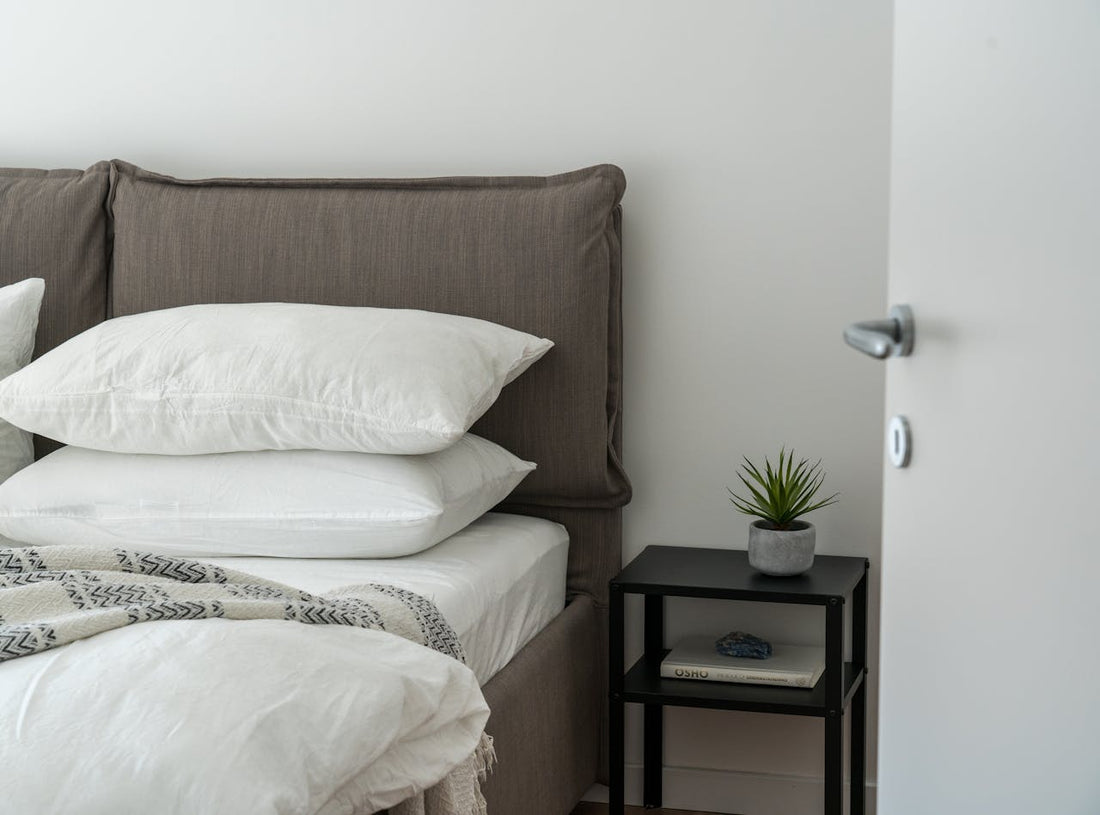In recent years, eco-conscious living has become a significant priority for individuals looking to reduce their environmental impact. From reusable shopping bags to solar panels, many small changes can make a significant difference.
One often overlooked yet impactful way to reduce your carbon footprint is by switching to bamboo bedding. Unlike traditional cotton or synthetic materials, bamboo bedding is a sustainable and eco-friendly alternative that benefits both the planet and your well-being.
In this blog post, we’ll explore how bamboo bedding can help reduce your carbon footprint and why it’s a smart choice for environmentally conscious consumers.
The Environmental Impact of Traditional Bedding Materials
Before diving into the benefits of bamboo bedding, it's essential to understand the environmental impact of traditional materials such as cotton and synthetic fabrics:
Cotton
- Water Usage: Cotton is one of the most water-intensive crops, requiring approximately 20,000 liters of water to produce just 1 kilogram of cotton.
- Pesticides and Chemicals: Conventional cotton farming uses a significant amount of pesticides and fertilizers, contributing to soil degradation and water pollution.
- Carbon Emissions: The production process for cotton involves high energy consumption, leading to substantial carbon emissions.
Synthetic Fabrics
- Non-Biodegradable: Synthetic fabrics, such as polyester, are derived from petroleum-based products and are non-biodegradable, meaning they contribute to landfill waste.
- Energy-Intensive Production: Manufacturing synthetic fabrics requires large amounts of energy, further increasing their carbon footprint.
With these environmental drawbacks in mind, it’s clear why consumers are seeking more sustainable options.
Why Bamboo Bedding is a Sustainable Choice
Bamboo bedding offers numerous environmental benefits that make it a superior choice for eco-conscious consumers:
1. Bamboo is Highly Renewable
Bamboo is one of the fastest-growing plants on the planet. It can grow up to 91 centimeters (35 inches) in a single day without the need for fertilizers or pesticides. This rapid growth rate means that bamboo can be harvested frequently without depleting natural resources.
2. Bamboo Requires Less Water
Unlike cotton, bamboo requires minimal water to grow. Bamboo plants rely on natural rainfall, making them a much more sustainable crop compared to water-intensive cotton.
3. Bamboo Absorbs More Carbon Dioxide
Bamboo is incredibly efficient at absorbing carbon dioxide from the atmosphere. In fact, some studies suggest that bamboo can absorb up to five times more carbon dioxide and produce 35% more oxygen than an equivalent stand of trees.
4. Bamboo is Biodegradable
Unlike synthetic fabrics, bamboo fibers are fully biodegradable. This means that once the bedding reaches the end of its lifecycle, it won’t contribute to landfill waste.
5. Eco-Friendly Production Processes
Many bamboo bedding brands use eco-friendly manufacturing processes that minimize the use of harsh chemicals and reduce water and energy consumption. Look for certifications such as OEKO-TEX® to ensure that the bamboo bedding you choose meets high environmental standards.
The Comfort Factor: Sustainable and Luxurious
Switching to bamboo bedding doesn’t mean compromising on comfort. In fact, bamboo bedding is renowned for its luxurious feel and numerous health benefits:
- Soft and Silky Texture: Bamboo fabric is naturally soft and silky, providing a luxurious feel that rivals high-thread-count cotton.
- Hypoallergenic: Bamboo fibers are naturally resistant to dust mites and allergens, making them an excellent choice for individuals with allergies or sensitive skin.
- Temperature Regulation: Bamboo fabric has excellent moisture-wicking and temperature-regulating properties, keeping you cool in the summer and warm in the winter.
- Durability: Bamboo bedding is incredibly durable, meaning it will last longer and reduce the need for frequent replacements, further reducing your carbon footprint.
How Bamboo Bedding Reduces Your Household Carbon Footprint
By switching to bamboo bedding, you can make a positive impact on your household's carbon footprint:
- Reduced Energy Consumption: Bamboo bedding requires less energy to produce than traditional cotton or synthetic fabrics.
- Lower Water Usage: The production process for bamboo bedding consumes significantly less water.
- Fewer Chemical Emissions: Eco-friendly bamboo bedding manufacturers use fewer harmful chemicals, reducing pollution and improving indoor air quality.
- Biodegradability: When bamboo bedding reaches the end of its life, it decomposes naturally, reducing landfill waste.
Tips for Choosing Eco-Friendly Bamboo Bedding
When shopping for bamboo bedding, keep the following tips in mind to ensure you're making a truly sustainable choice:
- Check for Certifications: Look for certifications such as OEKO-TEX® or GOTS (Global Organic Textile Standard) to ensure that the bamboo bedding meets high environmental and safety standards.
- Choose Reputable Brands: Opt for brands that are transparent about their sourcing and manufacturing processes.
- Avoid Blended Fabrics: Some bamboo bedding products are blended with synthetic fibers, reducing their eco-friendliness. Look for 100% bamboo options for maximum sustainability.
Why Choose OLARA for Your Bamboo Bedding Needs?
If you’re ready to make the switch to bamboo bedding, look no further than OLARA. This Australian brand is committed to providing high-quality, sustainable bamboo bedding that enhances both your sleep and your environmental impact.
What Sets OLARA Apart?
- Sustainably Sourced Materials: OLARA sources its bamboo from responsible growers who prioritize sustainability and environmental stewardship.
- Eco-Friendly Manufacturing: The brand utilizes eco-friendly production processes to ensure minimal environmental impact.
- Luxurious Comfort: OLARA’s bamboo bedding is not only sustainable but also incredibly soft, breathable, and hypoallergenic, offering the perfect balance of comfort and eco-consciousness.
- Commitment to Transparency: OLARA is committed to transparency, providing customers with detailed information about their materials and production processes.
By choosing OLARA, you’re not only investing in your comfort but also contributing to a healthier planet. Their bamboo bedding products help reduce your household’s carbon footprint while ensuring you get a restful night’s sleep.
Final Thoughts
Switching to bamboo bedding is a simple yet effective way to reduce your carbon footprint. With its numerous environmental benefits, including lower water usage, reduced carbon emissions, and biodegradability, bamboo bedding is an eco-friendly choice that doesn’t compromise on comfort.
When you choose bamboo bedding from a brand like OLARA, you’re making a conscious decision to support sustainable practices and reduce your environmental impact. It’s time to rethink your bedding choices and take a step toward a more sustainable future.



